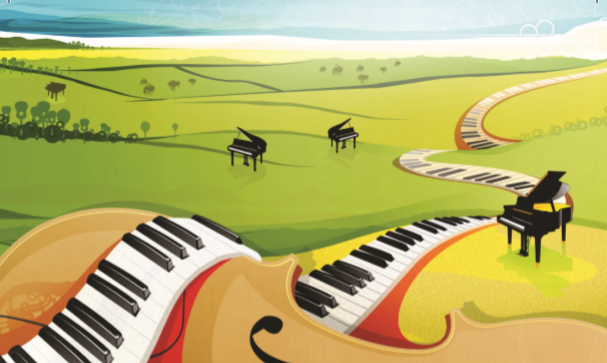Perhaps you may be able to relate to some common problems facing students who have had experience playing the piano . . .
Traditional Lessons
Traditional, reading-based, lessons often start by learning theory and notation.
While these are certainly essential skills that piano students need, learning to read before learning to “speak” the vocabulary of music is actually backwards from the way that people learn a new language . . . which is exactly how music is processed by the human brain!
If you’d like to make piano your “native tongue,” but feel that traditional lessons have stifled you somewhat, this program can help you extend and expand your current capabilities.
Playing By Ear
If you’ve learned to play piano “by ear,” then you have begun to develop a single tool in a musician’s entire arsenal of strategies and skills. A more holistic approach is necessary if you want to really up your game.
If you’d like to feel equally competent whether or not the sheet music is in front of you, there’s a better way to harmonize your skills that is less frustrating than trying to memorize the lines and spaces.
Simply Music can continue to refine your ear while layering additional senses and rounding out your musical skills.
YouTube and Online Lessons
While the appeal of learning from online videos is quite obvious by now, learning with a teacher is still the most effective way to make fast progress in piano lessons.
A live teacher can see what you are doing objectively and make corrections. It’s like have a personal trainer at the gym.
With Simply Music, you get the best of BOTH worlds:
* A live teacher to coach you through the peaks, valleys, and plateaus of progress, and
* Online videos to access at home, with step-by-step recaps and instructions.
The Advantages of Simply Music
If you are wondering what a program like Simply Music can offer someone who already has some experience playing the piano, consider it more like learning a new language, one that is similar, but nonetheless new.
Let’s say, for example, that you are very good at speaking English, and familiar with the alphabet used in English-speaking countries. If you are wanting to learn a similar language like Spanish, French, or Italian, one of the very best ways to learn is to immerse yourself in the language and culture — whether that is by spending time with a native speaker, or devoting a significant portion of time to a classroom environment.
Despite the alphabet being quite similar (nearly identical in fact), you will still need to enroll in a Level One class, because the arrangement, pronunciation, and overall use of that alphabet in other European languages is entirely different from English.
When starting lessons in the Simply Music Program, you might find yourself in a similar scenario — having to start at a lower level initially. However, as a more experienced student, you will progress more quickly than a beginner.
Freedom from the Page
Traditional lessons often leave students very reliant upon sheet music in order to play.
Simply Music will show you how to access music more naturally, and internalize it quickly, so that the page is only needed for reference.
This will open up new possibilities for you as you become more expressive, more musical, and more flexible.
Repertoire
Classical music is wonderful, but if your experience with piano lessons has been confined to one style, you are missing out.
Learning piano with Simply Music will broaden your horizons, and your repertoire to include modern, popular, contemporary, blues, gospel, jazz, and accompaniment style songs.
You’ll also learn how to improvise and compose.
Tools & Strategies
Songs contain the fundamental “vocabulary” for learning any other piece.
As your repertoire is broadened, you will also be learning playing-based tools and strategies, which can be applied to much more advanced music as you progress.


